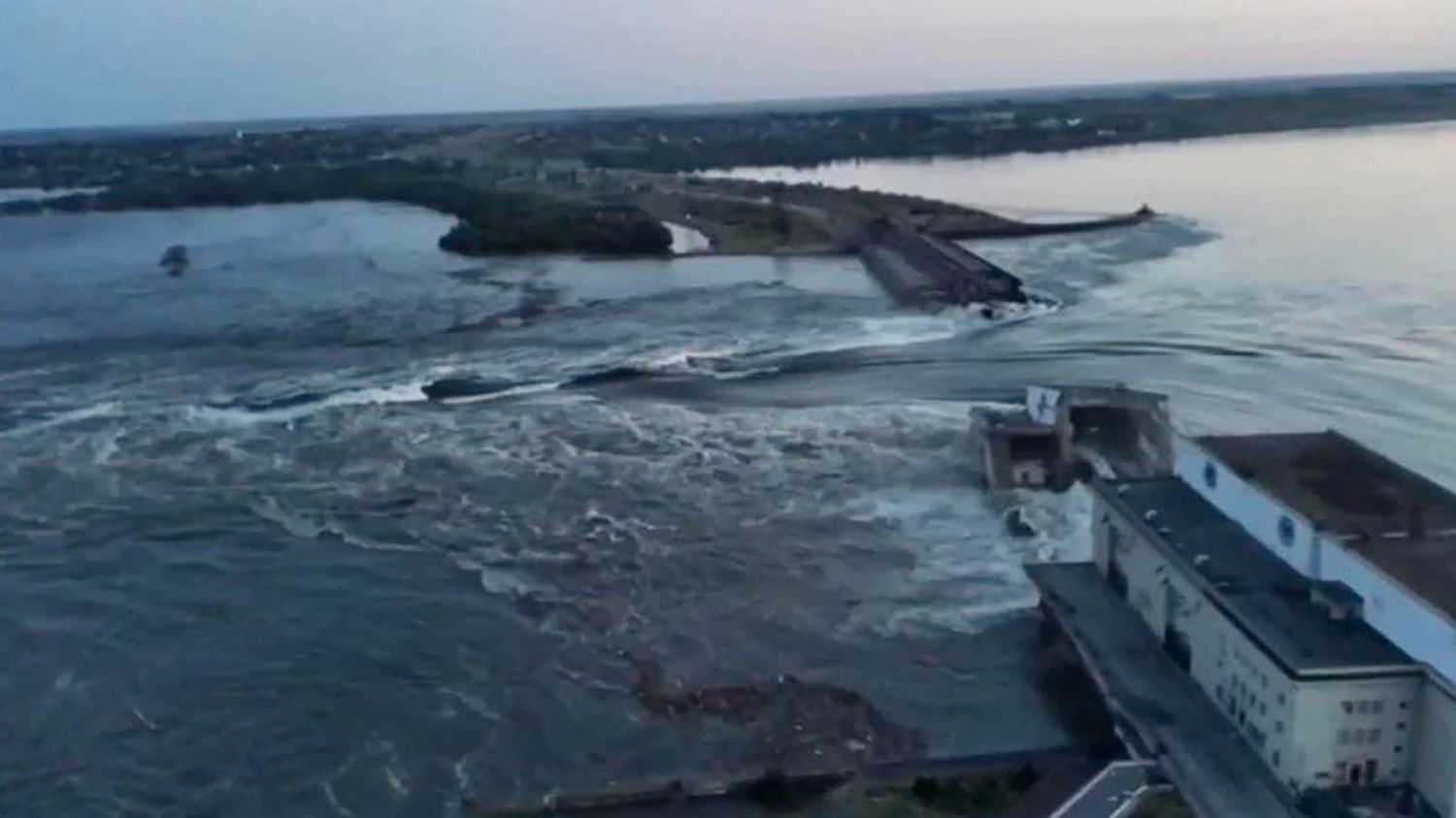The Kakhovka hydroelectric dam in southern Ukraine was partially destroyed overnight from Monday to Tuesday, according to Ukrainian authorities. “The destruction of areas that Russia was unable to defend is something, unfortunately, that we have already seen,” analyzes a military historian.
“The responsibility of the Russians is obviously the most likely explanation”declared Tuesday June 6 on franceinfo Cédric Mas, military historian, president of the Action Resilience Institute, after the partial destruction of a hydroelectric dam in Kakhovka in southern Ukraine. Moscow and kyiv accuse each other. The Kakhovka power plant and its dam are located on the east bank of the Dnieper, the largest river in Ukraine. This explosion will “to make more difficult”the Ukrainian counter-offensive, “because the most invaded banks are to the south”believes Cédric Mas.
>> War in Ukraine: what we know about the destruction of a dam near Kherson and its consequences
franceinfo: In your opinion, is this attack part of a very specific strategy by the Russian army?
Cedric Mas: The destruction of areas that Russia failed to defend is something, unfortunately, that has been seen many times before. There is this desire to destroy, to ruin, to transform into desolation the lands that were liberated, like Kherson and all the areas north of the Dnieper. We had already seen it around Izioum in Kharkiv or even around kyiv during the evacuation at the end of March-beginning of April. The responsibility of the Russians is obviously the most probable explanation. For the moment, we have no certainty, so we must remain cautious. All that is known is that the explosions started around 2:20 a.m., since people living around, from 2:20 a.m. local time, reported very loud noises and the noise water flowing from the reservoirs.
Is there a Russian objective in this affair?
Yes if we assume that there was a possibility for the Ukrainians to cross the river to attack and target the Crimea. Don’t forget that this is the most direct way to Crimea and that, apart from the hastily built fortifications by the Russians, there is nothing, no obstacle. The terrain is completely flat south of the Dnieper, up to the entrance to the Crimean peninsula. So that’s something that made it a natural route, provided you could cross the river. Of course, by widening the width of the river to be crossed, with what the military call a wet break, the Russians put a distance and that allows them to free forces to be able to reposition them elsewhere where they are in a little more difficulty. So it’s a military operation, beyond its disastrous consequences for the environment and the inhabitants who will have to continue to live in these desolate lands when the war ends.
>> War in Ukraine: Russia claims to have foiled a kyiv counter-offensive
So it is indeed likely to slow down the Ukrainian counter-offensive?
This will make it more difficult because it is in the south that the banks are the most invaded. We will have to stabilize a new crossing point, lengthen them, which will make them more vulnerable to air attacks, even as Ukrainian anti-aircraft defenses are mobilized for the defense of Kiev and other cities. Hence also the explanation of all these regular strikes and volleys. Last night, 35 more missiles were launched on kyiv, the major Ukrainian cities, to hold back the anti-aircraft means that we are delivering, which are very modern and very effective. It is a question of keeping them far from the front and preventing the protection of these crossing points which could then be targeted by hovering bombs and the means of Russian aviation artillery.
